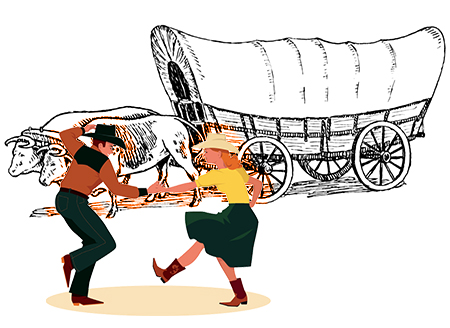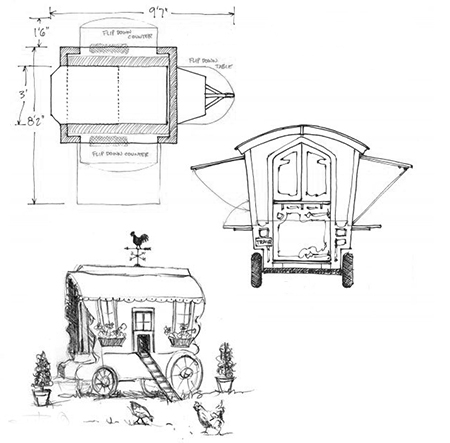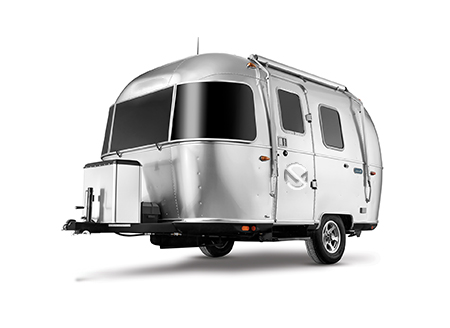Camping Equipment
 Here is How Campers and Caravans Became as Popular as They are Today
Here is How Campers and Caravans Became as Popular as They are Today
Camper vans and trailer, as well as recreational vehicles are the top-of-the-range camping equipment. They come in all shapes and sizes, and some have unprecedented level of luxury while other models are basic, practical and affordable.
The Pierce-Arrow Touring Landau was introduced in 1910, which can be referred to as the original motorhome. Around the same time, motorhomes built on truck frames were built in Canada.
The RV That Changed The Game
The first vehicle referred to as a RV (recreational vehicle) that made a huge impact was the Gypsy Van, built and used by the Conklin family in 1915. They used the eight-ton machine to travel between New York and California. The RV was created by Roland Conklin’s own Gas-Electric Motor Bus Company with the intention to provide the family with all the comforts of home during their trip. Thousands of people were amazed by the vehicle, including the media as it was something they had never seen before.
 Indeed, after the machine was seen for the first time, many people wanted to have it, and the next couple of decades were the times when the idea of using such vehicles became massively popular despite that the idea of camping was popular since the 19th century when William H.H. Murray published his works, including the first ‘how to camp’ guide.
Indeed, after the machine was seen for the first time, many people wanted to have it, and the next couple of decades were the times when the idea of using such vehicles became massively popular despite that the idea of camping was popular since the 19th century when William H.H. Murray published his works, including the first ‘how to camp’ guide.
Camping vehicles and equipment became popular after 1910 as they became more affordable when they went into mass production. The Conklins were the first to use a bus as a basis, allowing them to create a huge double-decker with all the conveniences of a home. It was referred to as a caravan or even a land yacht. What is important is that it paved the road for motorhomes as we know them today. People realized that going camping with a regular vehicle meant that a ton of other equipment would be needed, such as tents, sleeping bags, portable kitchens, etc. A motorhome had all these features integrated.
The REO Speed Wagon Bungalow was introduced in the mid-1920s followed by the Hudson Essex Pullman Coach – both functional motorhomes.
Next, the trailer was created, as motorhomes had a disadvantage – they could not be used as regular vehicles because of their size and their ineffectiveness as everyday transportation. They were also not suitable for narrow roads that were only suitable for cars. Of course, the higher price of a motorhome also reduced its popularity compared with the caravan trailer.
The first camping trailer was not a caravan, but a simple device for carrying the other camping equipment needed. Soon, a tent with a collapsing frame was added, and fully-functional tent-trailers were available in the 1920s. The Brintnall convertible camping trailer, for example, featured a folding bed.
 The Caravan Trailers Took Over
The Caravan Trailers Took Over
However, tent trailers were not as functional as caravans, and after a bad experience with one during a thunderstorm in 1928, Arthur Sherman decided to create a better product. Sherman’s design was waterproof and had a solid structure. It turned out to be too low, but it was still a novelty that many other campers were impressed by. Sherman knew it had a huge potential. He founded the Covered Wagon Company and paved the road for caravans as we know them today. The company was the biggest in the industry, selling 6,000 units in 1936. The total number of units produced by the industry exceeded 20,000 annually in the late 1930s, completely replacing tent trailers. Around that time, the legendary Airstream caravan trailers were created, featuring a sleek design with a mirror-polished shell. They became a true icon fast as they looked like nothing else on the market.
WWII put a halt on the industry and it wasn’t until 1950 when it got back on track. European makers such as Westfalia also entered the marked by converting vans to campers. Converting truck and bus chassis continued as well. Around that time, Raymond Frank came up with the ‘motorhome’ term. He created his own one in 1958 and people noticed how good it was. Frank started a business. They were more affordable than the competitor’s products and Frank competed with camping trailer makers as well.
The Mass-Production Began
Winnebago was the first company to mass-produce camping vehicles in 1967, which resulted in their affordable prices. The company’s number of employees grew four times in less than a decade. Winnebago was the biggest name on the market but the competition followed closely. More than 23,000 motorhomes were sold in the U.S. in 1969. The petrol crisis was a serious setback for the industry but many endured and today nearly 50,000 units are sold on the U.S. market.
Today’s market is unlimited in terms of possible options and equipment. There are ultra-luxurious RV available that have come a long way since the Gypsy Van. Brands like Hymer, Knaus, Entegra and Adria set the standards in the world of RVs, camper vans and camper trailers.